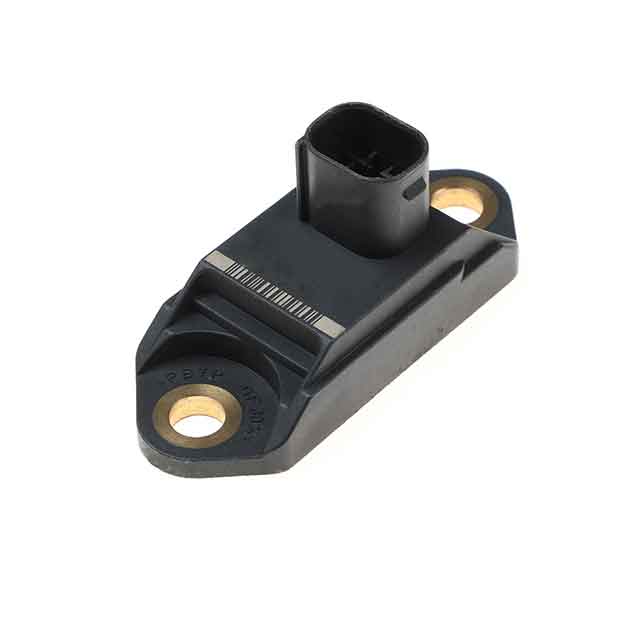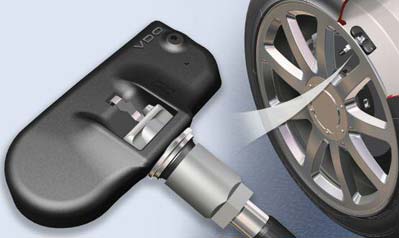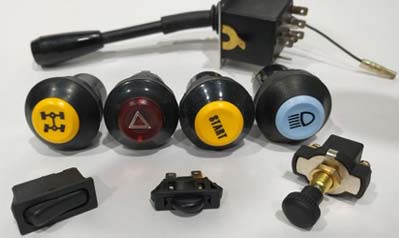Welcome to May Auto Parts Manufacturing & Supplying (MAPMS)
Welcome to May Auto Parts Manufacturing & Supplying (MAPMS)

The airbag sensor, also known as the airbag control module, is the input device of control signal in the srs supplemental restraint system. This device is responsible for detecting sudden deceleration, collisions, or impacts that may warrant the deployment of the vehicle’s airbags. The airbag sensor plays a pivotal role in protecting the vehicle’s occupants during accidents, making it an essential part of a vehicle’s safety system.
The airbag sensor is typically located in the center of the vehicle, often under the driver or front passenger seat, or in the middle of the dashboard. This strategic placement allows the sensor to monitor the entire vehicle effectively. The sensor itself is a complex piece of technology, comprising accelerometers, impact sensors, and a microprocessor. The accelerometers measure the rate of deceleration of the vehicle, while the impact sensors detect physical impacts. The microprocessor processes this data and decides whether or not to deploy the airbags.
Get the Prices of Airbag Sensor >Monitors a vehicle's speed and the distance between the vehicles.
Provide a warning to the driver if the vehicles get too close.
There are several types of airbag sensors, each with its unique functionality and detection method. These include airbag crash sensors, airbag pressure sensors, airbag impact sensors, and airbag front sensors. Understanding these different types of sensors can provide a deeper insight into the complex safety mechanisms of modern vehicles.
Airbag crash sensors, also known as deceleration sensors, are designed to detect a sudden decrease in speed, which is a common characteristic of a collision. These sensors typically use a mechanical or electronic mechanism to measure the vehicle’s deceleration. If the deceleration exceeds a certain threshold, the sensor sends a signal to the airbag control module, triggering the deployment of the airbags.
Airbag pressure sensor, on the other hand, are designed to detect a sudden increase in pressure within the vehicle’s structure during a collision. These sensors are usually located in the doors or side panels of the vehicle and are particularly effective in detecting side-impact collisions. When the pressure inside the vehicle rises rapidly due to an impact, the pressure sensor sends a signal to the airbag control module, causing the side or curtain airbags to deploy.
Airbag impact sensors are designed to detect the physical impact of a collision. These sensors are typically located in the front and rear of the vehicle and use a variety of technologies, including piezoelectric, capacitive, and MEMS technology, to detect an impact. When an impact occurs, the sensor sends a signal to the airbag control module, triggering the deployment of the appropriate airbags.
Airbag front sensors, as the name suggests, are located at the front of the vehicle. These sensors are designed to detect frontal collisions and are usually the first to respond in such scenarios. They work in conjunction with the crash sensors and impact sensors to provide comprehensive protection in the event of a frontal collision. For more custom selections, please inquiry us by email with specific requirements.

1) Symptoms of airbag system failure are difficult to diagnose, so diagnostic codes are the most important source of information for troubleshooting. Always check the diagnostic codes before disconnecting the battery.
2) Disconnect the ignition switch during inspection. If the vehicle allows to remove the negative electrode of the battery, it is better to disconnect the power supply. It should be started after removing the negative electrode for 90s or longer. Because the airbag system is equipped with a backup power supply, the airbag may still deploy within 90 seconds after removing the negative terminal of the battery.
3) Even if only a minor collision occurs and the airbag crash sensors are not deployed, the front airbag sensor and steering wheel cushion should be checked.
4) Do not expose the front airbag sensor, center airbag sensor assembly and steering wheel pad directly to hot air and flames.
5) When testing the circuit, a high-impedance multimeter should be used for measurement.
6) The parts of the airbag are attached with instruction labels, and the listed precautions should be strictly followed during operation.
7) After pulling out the airbag wiring plug, use a small copper wire to short the airbag connector.
8) Do not measure the resistance of the detonator tube of the airbag inflation element, so as not to cause the airbag system to explode by mistake. As a reliable auto spare parts company, we suggest the method of decomposing the inspection parts should be adopted first, and then searching step by step.
9) The airbag system is a very sensitive device. A little carelessness during inspection may detonate the airbag and cause unnecessary losses.
10) The wire harness and connector of the airbag system are generally covered with a special color sleeve, which is different from other system wire harnesses. Do not damage these bushings during inspection.
In conclusion, the airbag system is a critical safety feature in your vehicle, and it requires careful handling and maintenance. The airbag front sensor, airbag pressure sensor, and clock spring triton are all integral components of this airbag pressure sensor system. At MAPMS, we provide high-quality, reliable parts for your airbag system, ensuring your vehicle's safety features are always in optimal condition. Remember, a well-maintained airbag front sensor system can make the difference between life and death in the event of a collision. Therefore, always adhere to the safety precautions and ensure regular checks and maintenance of your airbag sensor system.
The crash sensor, also known as the airbag sensor, is a vital component of a vehicle's safety system. It is responsible for detecting a collision and triggering the deployment of the airbags, providing immediate protection to the vehicle’s occupants. However, like any other component in a vehicle, crash sensors can malfunction or fail, potentially compromising the effectiveness of the airbag system. Therefore, it is essential to test these sensors regularly to ensure they are functioning correctly. One common and effective method of testing crash sensors is by using a multimeter.
A multimeter is a versatile and widely used tool in automotive diagnostics, capable of measuring electrical voltage, current, and resistance. When it comes to testing crash sensors, a multimeter can be used to check the resistance of the sensor. This process involves several steps.
Firstly, you need to locate the crash sensor, a common type of auto spare parts, plays a crucial role in vehicle safety by detecting collisions and triggering the deployment of airbags. It is typically found in the front of the vehicle, often near the radiator. Once located, disconnect the sensor from the vehicle's electrical system. This is a crucial step to prevent any electrical interference during the test.
Next, set your multimeter to measure resistance, which is usually denoted by the ohm (Ω) symbol. Connect the multimeter's probes to the sensor's terminals. The multimeter will then display the sensor's resistance.
If the resistance falls within the specified range, it indicates that the sensor is functioning correctly. However, if the resistance is outside the specified range, it may suggest a problem with the sensor, requiring further investigation or replacement.
It's important to note that testing a crash sensor should be done with caution due to the sensitive nature of the airbag system. Before starting the test, it is recommended to disconnect the battery and wait for a few minutes to allow the system to discharge. This precaution helps to prevent accidental deployment of the airbags, which can be dangerous. Furthermore, due to the potential risks involved, it is always advisable to seek professional help if you are not confident in performing the test yourself.
Testing the front impact sensor of your vehicle is a critical safety measure. The airbag front sensor, also known as the airbag impact sensor, is responsible for detecting a collision and triggering the deployment of the airbags. Testing a front impact sensor in a vehicle involves several steps. It’s important to note that this process should only be undertaken by a qualified professional, as it involves working with potentially dangerous components of the vehicle’s airbag system. Here are the steps:
Disconnect the Battery: Before starting, disconnect the vehicle’s battery to ensure safety. Wait for about 10 minutes for the backup power supply to deplete.
Locate the Sensor: The front impact sensor is usually located at the front of the vehicle, often behind the bumper. Refer to your vehicle’s manual for the exact location.
Disconnect the Sensor: Once you’ve located the sensor, disconnect it from the wiring harness. This usually involves pressing a tab or removing a screw.
Test the Sensor: Use a digital multimeter to test the sensor. Set the multimeter to the ohms setting, then connect the probes to the sensor’s terminals. The exact reading you should get will depend on your specific vehicle, so refer to your vehicle’s manual. If the reading is outside the specified range, the sensor is likely faulty.
Check the Wiring: If the sensor appears to be functioning correctly, the problem could be with the wiring. Check the wiring for any signs of damage, such as fraying or corrosion.
Reconnect the Sensor: If the sensor and wiring are both functioning correctly, reconnect the sensor to the wiring harness.
Reconnect the Battery: Finally, reconnect the vehicle’s battery.
Clear the Codes: If your vehicle’s computer has stored any trouble codes related to the front impact sensor, use a code reader to clear them.
Test Drive: Take the vehicle for a test drive to see if the problem has been resolved.
Remember, working with the airbag system can be dangerous, so if you’re not comfortable performing these steps yourself, it’s best to take your vehicle to a professional mechanic.

MAPMS offers the most automotive parts and service to meet customers' needs. ***Please send inquiry with correct OEM numbers.***
Related Supplemental Restraint System
 The Multifunctionality of the Headlight Combination Switch
READ MORE >
The Multifunctionality of the Headlight Combination Switch
READ MORE >
 Auto Electric Fuel Pump: Keep Your Car Full of Power
READ MORE >
Auto Electric Fuel Pump: Keep Your Car Full of Power
READ MORE >
 What Do Coil Packs Do On A Car?
READ MORE >
What Do Coil Packs Do On A Car?
READ MORE >


